The Presidency: The Leadership Branch
Summary
Chapter 12 is about the executive branch. The framers created a presidency with limited powers. To enact government business, the president must cooperate with Congress, but power is divided among the branches, and the politics of shared power has often been stormy. In general, however, both the role and the influence of presidents have increased over the course of the nation's history. The framers gave the president three roles in the new government: commander in chief, diplomat in chief, and administrator in chief. Presidents have expanded their powers in several ways over the decades. Crises, both foreign and economic, have enlarged these powers. When there is a need for decisive action, presidents are asked to supply it. Congress, of course, is traditionally expected to share in the formulation of national policy.
The Constitution is not always clear on which branch has what powers, which creates controversies over the president's war power, authority to assert executive privilege, issue executive orders, and control the budge and spending process. Congress has made several attempts in recent decades to clarify the president's war and spending power. The president and Congress often have a tense relationship because of different constitutional expectations and party divisions. Presidents have a variety of tools for influencing Congress, however, and use their political and personal resources to gain support for their policy proposals. Presidents manage the executive branch with the assistance of a White House staff composed of roughly 400 individuals and a cabinet of department secretaries that oversees the civil servants. The vice president is also involved in helping the president manage government.
The presidency has evolved over the past two centuries to become one of the world's most powerful institutions. This evolution began with George Washington, who set many of the precedents for presidential leadership that exist to this day. It continued with the first modern president, Franklin D. Roosevelt, who built the presidency into an instrument for sweeping national policy. Americans expect a great deal from their presidents. They want them to be crisis managers, morale builders, and agenda setters, yet also want them to be able to connect with average Americans. Presidential greatness is hard to define. Historians, political scientists, and the American public consider Washington, Jefferson, Lincoln, and Franklin Roosevelt as their greatest presidents. Greatness depends in part on how presidents deal with crisis and war.
Key Terms
1. National Security Agency (NSA): A cryptologic intelligence agency of the United States Department of Defense responsible for the collection and analysis of foreign communications and foreign signals intelligence, as well as protecting U.S. government communications and information systems.
Under President George W. Bush’s order, the NSA was allowed to listen to thousands of telephone conversations and read thousands of emails from inside the U.S. to potential terrorists abroad without any congressional or judicial review.
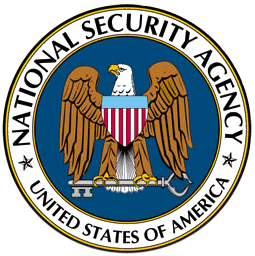
National Security Agency logo
2. Parliamentary System: A system of government in which the legislature selects the prime minister or president
If the framers wanted Congress to select the president from among its members, they would have created a parliamentary system that would look more like many European governments.

British Parliament in session
3. Twelfth Amendment (1804): Amendment that allows electors to cast separate votes for the president and vice president.
Under the Twelfth Amendment, each elector must cast distinct votes for President and Vice President, instead of two votes for President.

President Barack Obama and Vice President Joe Biden ran together on a presidential ticket.
4. Presidential Ticket: The joint listing of the presidential and vice presidential candidates on the same ballot as required by the Twelfth Amendment.
The Twelfth Amendment encouraged candidates to run together as a presidential ticket that would rise or fall together.
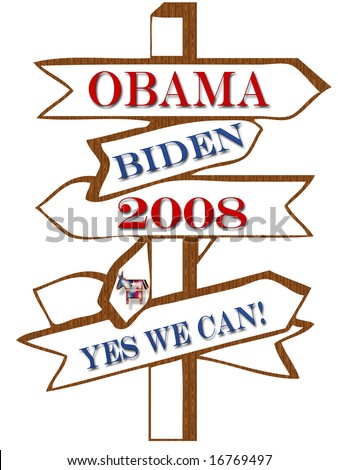
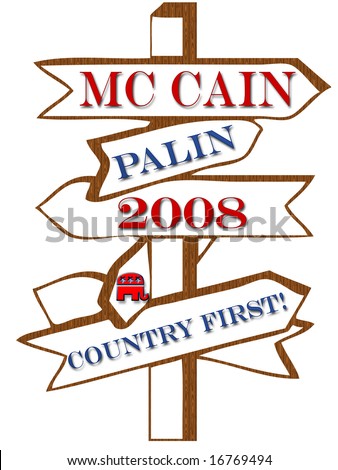
The presidential tickets for the 2008 election
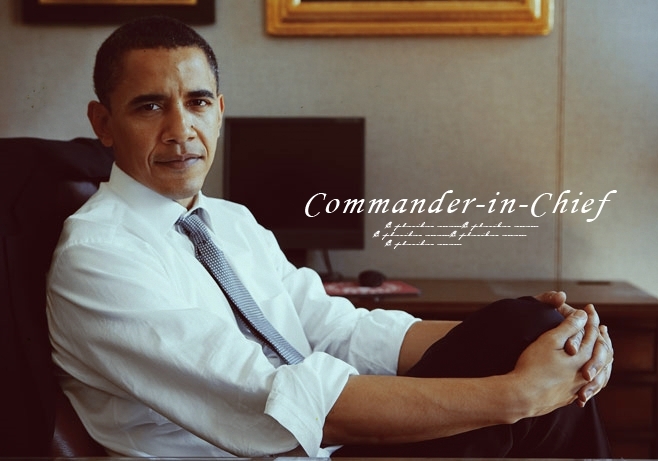
6. Diplomat in Chief: Article II makes the president negotiator in chief of treaties with foreign nations, which must be approved by the Senate by a two-thirds vote.
As the diplomat in chief, the president is given the power to negotiate treaties with foreign nations, but the treaties must be approved by the Senate.

President Obama shakes hands with Japanese Prime Minister Naoto Kan
7. Treaty: A formal, public agreement between the U.S. and one or more nations that must be approved by two-thirds of the Senate. Although presidents cannot make treaties without Senate approval, past presidents have argued that they have the power to terminate treaties without Senate consent.
The U.S. has negotiated a number of treaties to reduce the number of nuclear, biological, and chemical weapons across the world.

Painting by David R. Wagner of the Treaty of Paris that ended the War for Independence
8. Executive Agreement: A formal agreement between the U.S. president and the leaders of other nations that does not require Senate approval.
In 2003, the Bush administration negotiated a 22-item executive agreement with Mexico to create a “smart border” that would limit the movement of illegal aliens into the United States, while improving the flow of goods between the two nations.

A political cartoon about an executive agreement taking place
9. Congressional-executive Agreement: A formal agreement bewtween the U.S. president and the leaders of other nations that requires approval by both houses of Congress.
The 1994 North American Free Trade Agreement (NAFTA) is a congressional-executive agreement that provided intense anger among some critics, who argued that the U.S. would lose jobs as a result.

North American Free Trade Agreement between the United States, Mexico, and Canada
10. Administrator in Chief: By giving the president the power to require the opinion of the principal officer in each of the executive departments “upon any subject relating to the duties of their respective officers,” the Constitution puts the president in charge of the day-to-day operation of the federal departments and agencies.
As the administrator in chief, the president is given the instruments needed to supervise and control the day-to-day operations of the federal departments and agencies.
Click "here" for more information on the administrator in chief.
11. Appointment power: The Constitution gives the president authority to appoint judges, ambassadors, and other officers of the executive branch subject to the advice and consent to the Senate.
The president's appointment power gives presidents the ability to control what happens inside departments and agencies during their terms and to shape the federal judiciary far into the future.

President Obama nominates Judge Sonia Sotomayor for Supreme Court Justice
12. Veto: A formal decision to reject a bill passed by Congress.
If a bill is vetoed by a president, it can be enacted only if the veto is overridden, which requires a two-thirds vote in each chambers of Congress.


Bill can be voted by the president, but vetoes can also be overriden.
13. Pocket Veto: A formal decision to reject a bill passed by Congress after it adjourns--if Congress adjourns during the ten days that the president is allowed in order to sign or veto a law, the president can reject the law by taking no action at all.
If a president does not sign or veto a bill within ten days after receiving it, the bill becomes law without the president’s signature. But if Congress adjourns within the ten days, the president can kill (pocket veto) the bill by taking no action.

Pocket veto
14. Pardon: The president's pardon power can be used to shorten prison sentences, correct judicial errors, and protect citizens from future prosecution. It can also be used to address national controversies.
On his last day in office in 2001, President Bill Clinton pardoned several of his associates who had been jailed in a long investigation of a real estate scandal dating back to his time as governor of Arkansas.
Click "here" for the 12 Steps to a Federal Pardon.
15. Take Care Clause: The constitutional requirement (Article II, Section 3) that presidents take care that the laws are faithfully executed, even if they disagree with the purpose of those laws.
The Take Care Clause makes the president responsible for the implementing of laws that Congress enacts, even ones that are enacted through the override of a presidential veto.

Take Care Clause
16. Inherent Powers: Powers that grow out of the very existence of government.
Presidents sometimes use the take care clause to claim inherent powers, meaning powers they believe are essential to protecting the nation. Jefferson drew on this broad notion in making the Louisiana Purchase, and Bush used a similar justification in authorizing the domestic eavesdropping program.

President Bush authorized the domestic eavesdropping program using presidential inherent powers
17. State of the Union Address: The president's annual statement to Congress and the nation.
The power to inform and convene Congress, which has evolved to mean a constant stream of presidential messages as well as the annual State of the Union Address, gives presidents a significant platform for presenting their legislative agenda to both Congress and the American people.
President Obama giving his State of the Union Address.
18. Twenty-fifth Amendment: Under the Twenty-fifth Amendment, presidents can be removed from office temporarily if the vice president and a majority of either Congress or the president’s own cabinet secretaries declare that the president is unable to discharge the powers and duties of the office. The amendment also allows a president to appoint a new vice president in the event of the vice president’s own resignation, death, impeachment, or rise in the presidency.
The Twenty-fifth Amendment deals with presidential succession.
Click "here" for more information on presidential succession.
19. Impeachment: Formal accusation against the president or other public official, the first step in removal from office. The House drafts articles of impeachment that charge the president with treason, bribery, or other high crimes and misdemeanors. If the articles are approved by a majority vote, the Chief Justice of the Supreme Court oversees a trial before the entire Senate. If convicted by a two-thirds vote of the Senate, the president is removed immediately from office.
The impeachment process has only been used twice in history: Andrew Johnson (1868) and Bill Clinton (1998). Both Senate trials resulted in acquittals.
President Andrew Johnson's impeachment, the first impeachment in U.S. history
20. War Powers Act aka War Powers Resolution: The law declares that a president can commit the armed forces of the United States only (1) after a declaration of war by Congress, (2) by specific statutory authorization, or (3) in a national emergency created by a attack on the United States or its armed forces. After committing the armed forces under the third circumstance, the president is required to report to Congress within 48 hours. Unless Congress declares war, the troop commitment must be ended within 60 days.
Because presidents can declare a national emergency under almost any circumstances and often act under broad legislation that authorizes the use of force in ambiguous situations, the War Powers Act is almost always ignored.

A political cartoon about when the War Powers Act was first passed
21. Executive Privilege: The right to keep executive communications confidential, especially if they relate to national security.
The Constitution does not give presidents the explicit power to withhold information from Congress or the public, but courts have recognized that presents have the executive privilege to keep secrets, especially if doing so is essential to protect national security.

A political cartoon about executive privilege regarding Karl Rove and President George W. Bush
22. Executive Orders: Formal Orders issued by the president to direct action by the federal bureaucracy. According to past Supreme Court decisions,executive orders are generally accepted as the supreme law of the land unless they are in conflict with the Constitution or a federal law.
Presidents execute the laws and direct the federal departments and agencies in part through executive orders, which are formal directives that are just as strong as laws and can be challenged in the courts.

President Obama signing an executive order
23. Federal Budget: The President's proposal to the U.S. Congress which recommends funding levels for the next fiscal year, beginning October 1.
The Constitution explicitly gives Congress the power to appropriate money in the federal budget, but presidents are responsible for actually spending the money.

A graph of the federal budget for 2011
24. Congressional Budget and Impoundment Control Act (1974): An act that sharply curtailed the president's use of impoundment in response to Nixon's broad definition of impoundment, which allows changes in a spending bill based on the president's ideology.
The Congressional Budget and Impoundment Control Act gave Congress new powers to control its own budget process and created the Congressional Budge Office to give the institution its own sources of economic and spending forecasts, and required the president to submit detailed requests to Congress for any proposed rescission (cancellation) of congressional appropriations.
Click "here" for more information on the Congressional Budget and Impoundment Control Act.
25. Impoundment: A decision by the president not to spend money appropriated by Congress, now prohibited under federal law.
The president can no longer impound appropriated money by Congress.
Click "here" for a Senate Report regarding impoundments.
26. Congressional Budget Office (CBO): Created by the Congressional Budget and Impoundment Control Act to give Congress its own sources of economic and spending forecasts.
The CBO allows Congress to control its own budget process and to have its own sources of economic and spending forecasts.
Click "here" to read about the CBO's current budget and economic outlook.
27. Line Item Veto: Presidential power to strike, or remove, specific items from a spending bill without vetoing the entire package; declared unconstitutional by the Supreme Court.
In an effort to control its own tendency to overspend, Congress allowed presidents to strike out specific sections of an appropriations bill while signing the rest into law with a line item veto until 1998 when it was declared unconstitutional by the Supreme Court.

A political cartoon illustrating the line item veto.
28. Unilateralism: Any doctrine or agenda that supports one-sided action.
Presidents have a set of unilateral powers to shape the implementation of laws, even to the point of ignoring them. They control much of the information that flows from federal departments and agencies, shape the national debate through messages to Congress and the public, direct the budget process that sets the initial debate about spending and taxation, control the behavior of their political appointees through tight White House oversight, and issue executive orders and presidential directives that can either slow or accelerate the implementation of laws.

The cover of a book about what the author considers to be U.S. unilateralism.
29. Chief of Staff: The head of the White House staff.
The chief of staff, who is considered the president's most loyal assistant, heads the White House staff, which also includes the president's chief lawyer, speechwriters, legislative liaison staff, and press secretary.

President Obama and his current chief of staff, William Daley
30. National Security Council (NSC): The principal forum used by the president for considering national security and foreign policy matters with his senior national security advisors and Cabinet officials and is part of the Executive Office of the President of the United States.
The NSC advises and assists the president on national security and foreign policies.
Click "here" for more information on the NSC.
31. Executive Office of the President: The cluster of presidential staff agencies that help the president carry out his responsibilities. Currently the office includes the Office of Management and Budget, the Council of Economic Advisers, and several other units.
The Executive Office of the President was created in 1939 to give the president more help running the federal departments and agencies.
Click "here" for more information on the Executive Office of the President and a list of the different entities that exist within it
32. Office of Management and Budget (OMB): Presidential staff agency that serves as a clearinghouse for budgetary requests and management improvements for government agencies.
The OMB is the central presidential staff agency. Its director advises the president in detail about the hundreds of government agencies--how much money they should be allotted in the budget and what kind of job they are doing.
Click "here" to read about the OMB's open government plan
33. Cabinet (inner & outer): Advisory council for the president, consisting of the heads of the executive departments, the vice president, and a few other officials selected by the president. The departments of Defense, Justice, State, and Treasury are often called the inner cabinet because they are so important to the president's foreign and domestic success. The other departments are generally called the outer cabinet largely because they are more distant from the day-to-day worries that occupy the president and the White House staff.
The cabinet is not specifically mentioned in the Constitution, yet since George Washington's administration, every president has had one to act as his advisory council.

President Obama and his cabinet members
34. Vice President: While the Vice President's only constitutionally prescribed functions, aside from Presidential succession, relate to his role as President of the Senate, the office is now commonly viewed as a member of the executive branch of the federal government, despite the office's history.
No matter how influential they become, vice presidents only have one major responsibility: to be ready to take the oath of office in case the president cannot discharge his duties.

Joe Biden, the current vice president of the United States
36. Rally Point: A rise in public approval of the president that follows a crisis as Americans "rally 'round the flag" and the chief executive. They don't necessarily last long, however. George W. Bush's ratings jumped dramatically following the 911 attacks when he called on the nation to support the war on terrorism, but eventually fell back with the continued violence after the first moments of the war in Iraq.
Rally points are particularly strong when a military action, such as an invasion or a bombing, is both short and successful.

President Bush making a speech following the 911 attacks, which boosted his rally points
35. Crisis Management: One of the president's jobs is to manage crises, both foreign and domestic.
Americans expect presidents to be crisis managers. When presidents react quickly to a crisis, their rally points go up.

Bush's ratings fell when his administration was slow to help New Orleans after Hurricane Katrina hit.
37. Morale Builder: As chief of state, the president must project a sense of national unity and authority as the country's chief ceremonial leader.
The morale-building job of the president involves much more than just ceremonial cheer-leading or quasi-chaplain duties. Presidential leadership, at its finest, radiates national self-confidence and helps unlock the possibility for good that exists in the nation.
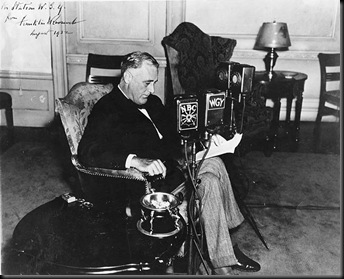
Franklin D. Roosevelt delivered fireside chats during the Great Depression to boost the morale of the American people
38. Public Policy (how the president affects it): By custom and circumstance, presidents are now responsible for proposing initiatives in foreign policy and economic growth and stability.
The different types of public policy include national security policy, economic policy, and domestic policy. In national security policy, the president is given the responsibility to negotiate treaties and commitments with other nations along with the command of two major instruments of foreign policy: the diplomatic corps and the armed services. In economic policy, presidents have been expected to promote policies to keep unemployment low, fight inflation, keep taxes down, and promote economic growth and prosperity. In domestic policy, presidents are expected to respond to the pubic demand by supporting legislation on popular issues.
Click "here" to read about a current public policy, specifically the current national security policy.
39. Persuader: Presidents must build political coalitions if they are to have any chance of winning passage of their legislative priorities. Despite their formal powers, presidents spend most of their time persuading people. As Richard Neustadt argues, the power to persuade is the president's chief resource.
The power to persuade is based on the president's ability to communicate directly with members of Congress and the pubic, which rests on skillful use of press conferences, speeches, and public events to maintain contact with the country.

President Obama speaking at a press conference
40. Presidential personality types: Presidential personality plays a central role in the president's ability to play these roles as crisis manager, agenda-setter, and morale builder. James David Barber describes the first kind of president who brings energy to these roles and enjoys the job as an active-positive, the second kind of president who has little energy and gains little emotional reward from his work as a passive-negative, and the third kind of president who brings energy to the job but little little joy as active-negative.
Presidential personality affects the president's ability to carry out their responsibilities as crisis manager, agenda-setter, and morale builder.
John F. Kennedy is an example of a president who falls in the active-positive category
41. Gridlock: A government, business or institution's inability to function at a normal level due either to complex or conflicting procedures within the administrative framework or to impending change in the business.
The framers guaranteed that members of Congress and the president would represent different constituencies, which often leads to conflict over major legislation and gridlocks.

A political cartoon illustrating a gridlock in government
42. Mandate: A president's claim of broad public support.
Presidents who enter office with a large electoral margin, high public approval, and a party majority in Congress often claim a mandate to govern. Mandates also reside in public approval for either the president or some policy issue.

President Obama's presidential job approval ratings affects his mandate to govern
43. Cycle of Increasing Effectiveness: The tendency of presidents to learn more about doing their jobs over time. They learn how Washington works, what powers they can use to influence congressional action, and who they need to convince to win passage of their top priorities. They also learn how to use unilateral powers to accomplish some of their goals.
According to the cycle of increasing effectiveness, the longer presidents stay in office, the better they get at being president.

Many Americans doubted President Obama because of his inexperience, but now that he is in the third year of his presidential term, many people are more confident that he will carry out his role as the president of the United States well.
44. Cycle of Decreasing Influence: The tendency of presidents to lose support over time.
According to the cycle of decreasing influence, as presidential approval fails over time, presidents become less influential on Capitol Hill.

Although Republicans actually gained more seats in Congress during Bush's first six years, the steady decline in public approval made the seats less dependable for the president's cause.
Quiz
1. What is the president’s annual statement to Congress and the nation called?
2. True or False: The Constitution gives the president authority to appoint judges, ambassadors, and other officers of the executive branch subject to the advice and consent to the Senate.
3. What are the three main roles that a president has in government?
4. What is the formal agreement between the U.S. president and the leaders of other nations that requires approval by both houses of Congress?
5. True or False: If Congress adjourns within the ten days, the president can kill the bill by taking no action.
6. How can a veto be overridden?
7. True or False? Presidents execute the laws and direct the federal departments and agencies in part through executive orders, which are formal directives that are just as strong as laws and can be challenged in the courts.
8. What is a formal accusation against the president or other public official, which is the first step in removal from office?
9. Which amendment requires each elector to cast distinct votes for President and Vice President, instead of two votes for President?
10. Presidents sometimes use the take care clause to claim _________ _________, meaning powers they believe are essential to protecting the nation.
11. True or False: A treaty is a formal, public agreement between the United States and one or more nations that must be approved by two-thirds of the House of Representatives.
12. What is the right to keep executive communications confidential, especially if they relate to national security?
13. What is a system of government in which the legislature selects the prime minister or president?
14. True or False: Presidents are not responsible for the implementing of laws that were enacted through the override of a presidential veto.
15. What is a formal agreement between the U.S. president and the leaders of other nations that does not require Senate approval?
16. True or False: The pardon power can be used to shorten prison sentences, correct judicial errors, and protect citizens from future prosecution.
17. What amendment deals with presidential succession?
18. True or False: If a president does not sign or veto a bill within twenty days after receiving it, the bill becomes law without the president’s signature.
Answers
1. State of Union Address
2. True. This is called the appointment power.
3. Commander in chief, diplomat in chief, administrator in chief
4. Congressional executive agreement
5. True. This is called a pocket veto.
6. A two-thirds vote in each chamber of Congress
7. True
8. Impeachment
9. Twelfth Amendment
10. Inherent powers
11. False. A treaty must be approved by the Senate.
12. Executive privilege
13. Parliamentary system
14. False. According to the Take Care Clause in the Constitution, presidents are responsible for the implementing of laws that Congress enacts, even ones that are enacted through the override of a presidential veto.
15. Executive agreement
16. True.
17. Twenty-fifth amendment
18. False. Ten days.